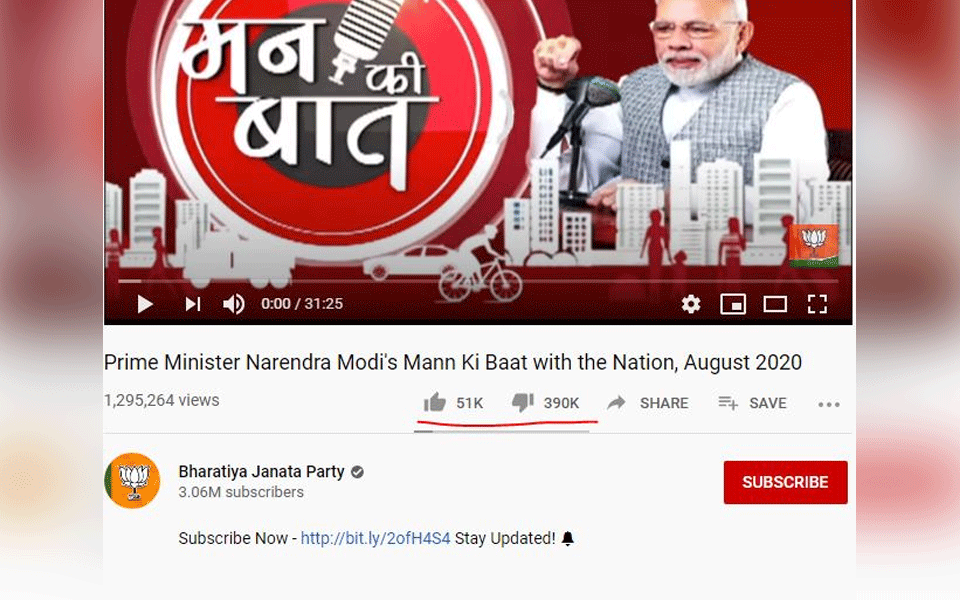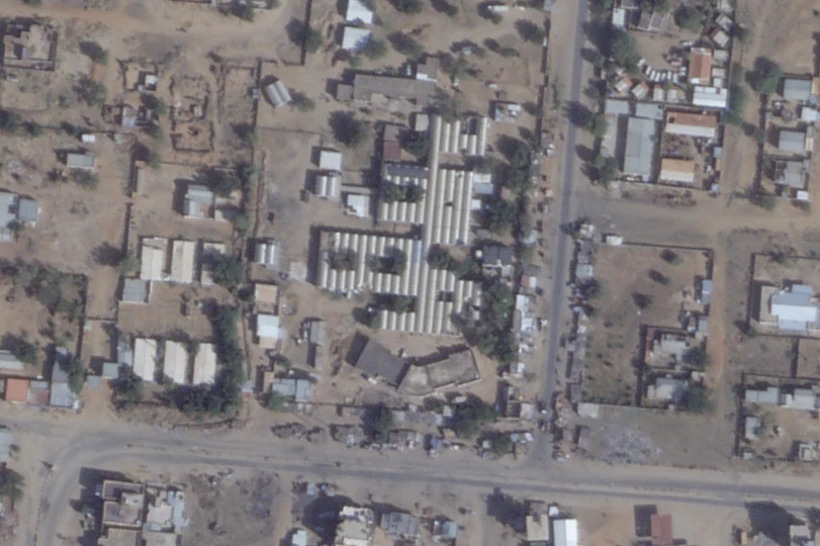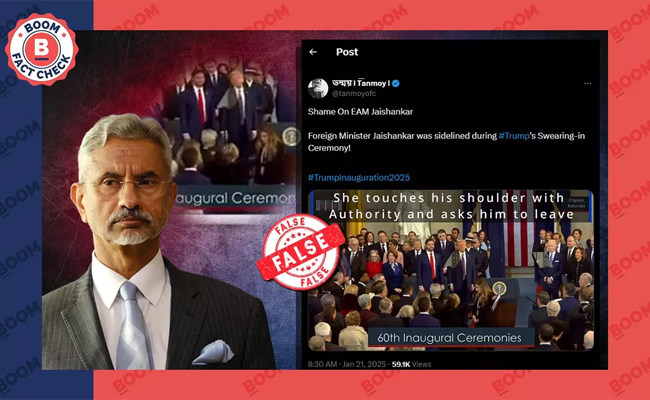New Delhi: Disappointed with Prime Minister Narendra Modi, as he skipped ongoing controversy around various exams, students chose to dislike his ‘Mann ki baat’ video uploaded on Sunday to mark their protest.
Ahead of Sunday’s ‘Mann ki baat’ the students from across the country expected the PM to address the issue but the PM spoke about varies topics like celebration of Onam and Indian toy industry among others but made no mention of exams.
Ahead of his program, Twitter started to trend #Mann_Ki_Nahi_Student_Ki_Baat against the decision of conducting the engineering and medical entrance tests - JEE (Main) April 2020 and NEET-Undergraduate examinations - in September. The hashtag was trending even after 'Mann Ki Baat'.
Before today's program, the video would get a few downvotes on YouTube. Thus, it's not that the video of 'Mann Ki Baat' did not get downvotes till now. However, Sunday's video uploaded by Youtube channels of Narendra Modi, PMO India, BJP and DD had many dislikes. BJP and DD's YouTube Channel had more dislikes than likes.
The video had over 3.9 lakh dislikes to go with around 50,000 likes.
The comment section of the BJP's YouTube channel below the video was also flooded with comments related to postponement of exams amidst pandemic.
In the wake of COVID-19 pandemic, parents and students wanted the postponement of JEE and NEET, however, the Ministry of Education clarified that the competitive exams will be held in September as it was scheduled.
As the date of the exam is coming closer, the outrage on social media is increasing day by day. Many politicians across the party lines have also supported the students in their protest.


Let the Truth be known. If you read VB and like VB, please be a VB Supporter and Help us deliver the Truth to one and all.
El Fasher (AP): Some 70 people were killed in an attack on the only functional hospital in the besieged city of El Fasher in Sudan, the chief of the World Health Organisation said on Sunday, part of a series of attacks coming as the African nation's civil war escalated in recent days.
The attack on the Saudi Teaching Maternal Hospital, which local officials blamed on the rebel Rapid Support Forces, came as the group has seen apparent battlefield losses to the Sudanese military and allied forces under the command of army chief Gen Abdel-Fattah Burhan. That includes Burhan appearing near a burning oil refinery north of Khartoum on Saturday that his forces said they seized from the RSF.
International mediation attempts and pressure tactics, including a US assessment that the RSF and its proxies are committing genocide and sanctions targeting Burhan, have not halted the fighting.
In the Saudi hospital attack in El Fasher, WHO Director-General Tedros Adhanom Ghebreyesus offered the death toll in a post on the social platform X.
Officials and others in the capital of North Darfur province had cited a similar figure Saturday, but Ghebreyesus is the first international source to provide a casualty number. Reporting on Sudan is incredibly difficult given communication challenges and exaggerations by both the RSF and the Sudanese military.
“The appalling attack on Saudi Hospital in El Fasher, Sudan, led to 19 injuries and 70 deaths among patients and companions,” Ghebreyesus wrote. “At the time of the attack, the hospital was packed with patients receiving care.”
Another health facility in Al Malha also was attacked Saturday, he added.
“We continue to call for a cessation of all attacks on health care in Sudan, and to allow full access for the swift restoration of the facilities that have been damaged,” he wrote. “Above all, Sudan's people need peace. The best medicine is peace.”
Ghebreyesus did not identify who launched the attack, though local officials had blamed the RSF for the assault.
The RSF and Sudan's military began fighting each other in April 2023. Their conflict has killed more than 28,000 people, forced millions to flee their homes and left some families eating grass in a desperate attempt to survive as famine sweeps parts of the country.
Other estimates suggest a far higher death toll in the civil war.




_vb_20.jpeg)
